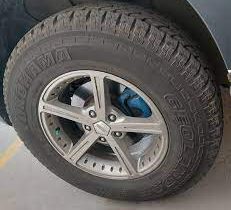Prolonged exposure to intense heat, particularly during summer months, can wreak havoc on your wiper blades. The rubber compound that forms the wiping edge is susceptible to drying, cracking, and distortion under high temperatures. The sun’s ultraviolet (UV) rays accelerate this process, causing the rubber to harden and lose its flexibility. As a result, heat-damaged blades leave streaks across the windshield, impairing visibility and potentially creating dangerous driving conditions. Parking your car in shaded areas and lifting the wiper blades off the windshield can help mitigate the damaging effects of extreme heat. Regularly inspecting your wiper blades for cracking or hardening is crucial during hot seasons.
Frigid Temperatures: Rendering Blades Brittle
Cold weather poses a different set of challenges for wiper blade performance. The rubber compound can become stiff and brittle in freezing temperatures, losing its ability to conform to the windshield’s surface. This can lead to chattering, skipping, and uneven wiping. Ice and snow accumulation can also put extra strain on the blades and the wiper motor. Before using your wipers in icy conditions, make sure to clear the windshield of large ice buildup to avoid tearing or damaging the rubber. Using a windshield washer fluid with antifreeze properties also helps prevent the fluid from freezing on the windshield and further damaging the blades.
The Rain’s Role: Corrosion and Wear
While rain is what wiper blades are designed to combat, it can also contribute to their wear and tear. Acid rain, containing pollutants, can corrode the rubber compound over time, reducing its effectiveness. Additionally, constantly wiping across a dirty windshield introduces abrasive particles that can scratch the glass and wear down the blade’s edge. Regular cleaning of the windshield with appropriate cleaning solutions helps to remove dirt and debris, prolonging the life of the wiper blades. Also, ensure that your windshield washer fluid reservoir is full, as this helps keep the windshield clean and lubricated. The Auto Repair in Henderson, NV based service would be the best choice here.
Extending Blade Life: Simple Preventative Measures
Taking proactive steps can significantly extend the life of your wiper blades. Beyond parking in shaded areas and clearing ice and snow, regularly clean the wiper blades themselves with a damp cloth to remove dirt and debris. Inspect the blades frequently for any signs of damage, such as cracks, tears, or hardening. Consider using a windshield protector to shield the glass from the elements. Additionally, replace your wiper blades every six to twelve months, or sooner if you notice a decline in their performance.
Prioritizing Safety: Replacing Worn Wipers
Ultimately, the safety of you and your passengers depends on clear visibility through the windshield. Compromised wiper blades can significantly impair your ability to see the road ahead, especially during inclement weather. Don’t delay replacing worn or damaged wiper blades. A relatively small investment in new wiper blades can make a significant difference in your driving safety, ensuring that you have optimal visibility in all weather conditions. Prioritizing this maintenance is crucial for responsible driving.












